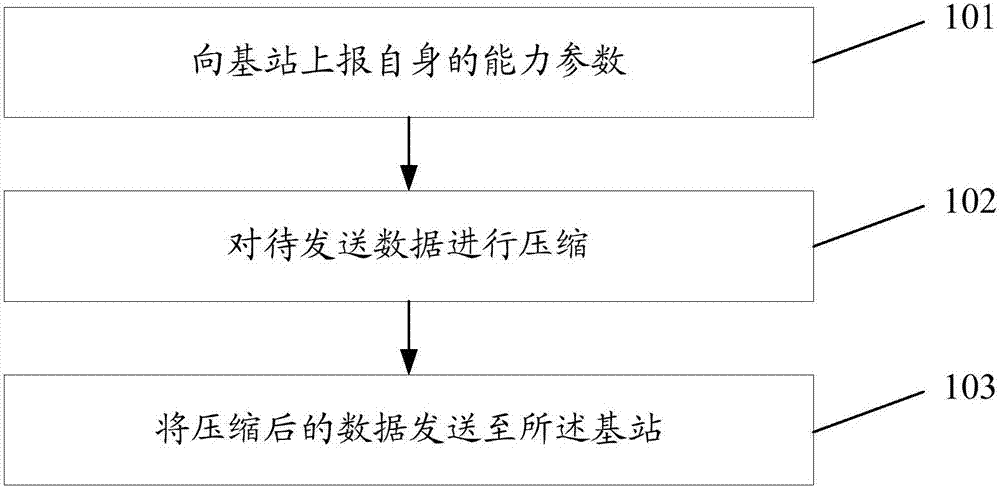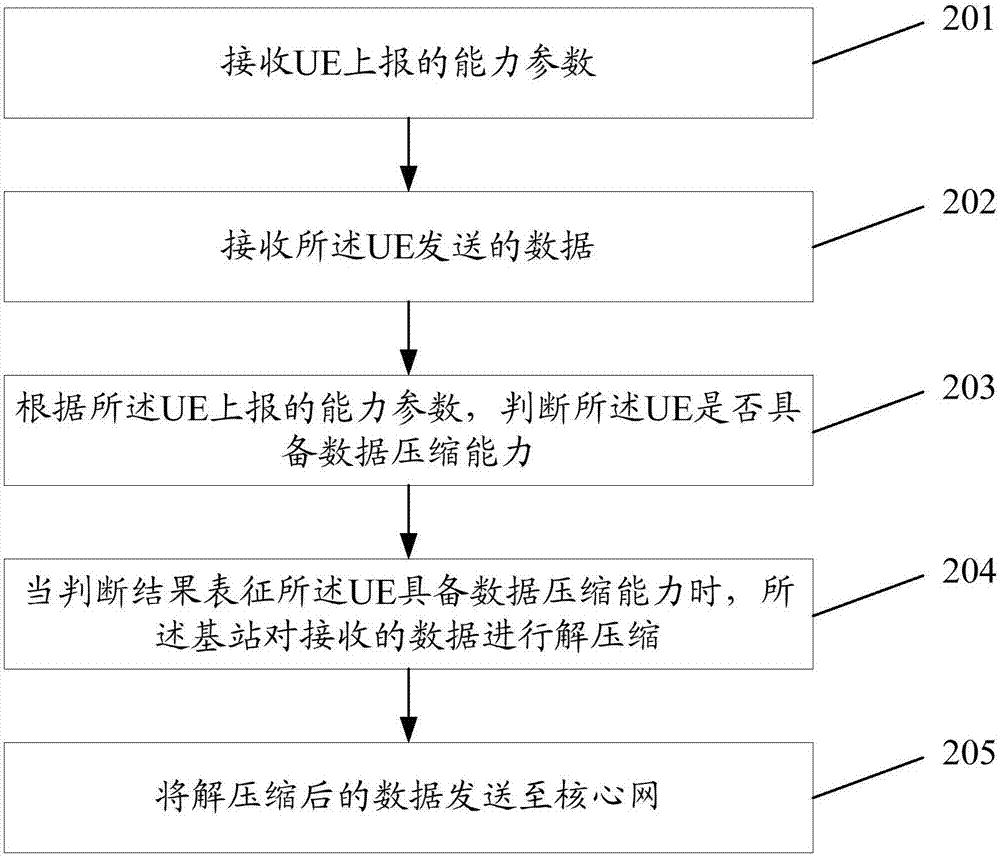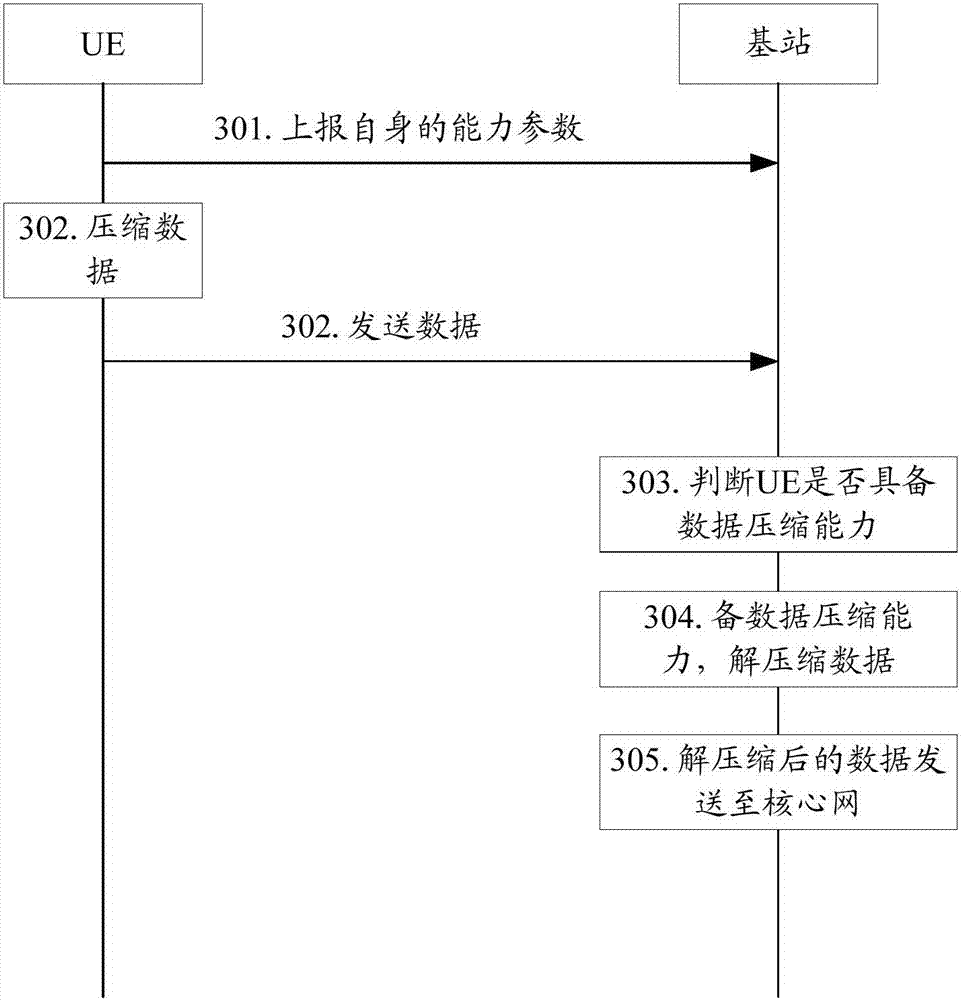Uplink data transmission method and system, user device and base station
A data transmission method and base station technology, applied in user equipment and base stations, uplink data transmission method and system field, can solve problems such as inability to meet deep coverage, packet loss, frequent retransmission, etc.
- Summary
- Abstract
- Description
- Claims
- Application Information
AI Technical Summary
Problems solved by technology
Method used
Image
Examples
Embodiment 1
[0107] This embodiment provides a method for uplink data transmission, which is applied to UE, such as figure 1 As shown, the method includes the following steps:
[0108] Step 101: The UE reports its own capability parameters to the base station;
[0109] Here, the reported capability parameter can indicate that the UE has a data compression capability.
[0110] In practical applications, the timing for performing step 101 may be: when the UE initially attaches, when the UE performs random access, or when the UE periodically reports its own capability parameters.
[0111] In actual application, the specific implementation of this step may include:
[0112] The UE adds a first variable (new variable, which may be named DataCompressionIndex) to the UE Capability parameter, that is, the UE Capability parameter includes the first variable, and the first variable indicates the The UE supports data compression capability; and sends the UE Capability parameter to the base station...
Embodiment 2
[0194] On the basis of the first embodiment, this embodiment uses the UE to report a specific compression algorithm to illustrate the uplink data transmission process.
[0195] The UE reports the compression algorithm A supported by itself to the eNB, and decides to compress the data packet at the application layer.
[0196] The UE uses the compression algorithm A to compress the data packets of the application layer, and sends them to the eNB after compression.
[0197] After eNB receives the data packet of the application layer sent by the UE, it determines that the UE supports the data compression function according to the compression algorithm reported by the UE, so it decompresses the data packet of the UE application layer according to the preset compression algorithm A, and then forwards it to the core network.
Embodiment 3
[0199] On the basis of the first embodiment, this embodiment describes the uplink data transmission process by using the set of compression algorithms reported by the UE.
[0200] The UE reports the compression algorithm set Ω supported by itself to the eNB, which includes three compression algorithms A, B, and C, and decides to compress the data packet at the network layer.
[0201] The UE uses any compression algorithm (compression algorithm A, B, or C) in the compression algorithm set Ω to compress the data packets at the network layer, and sends the compressed data packets to the eNB.
[0202] After receiving the network layer data packet sent by the UE, the eNB determines that the UE supports the data compression function according to the compression algorithm reported by the UE, so according to the preset compression algorithm set, the UE network layer data packet is decompressed by blind detection , and then forwarded to the core network.
PUM
 Login to View More
Login to View More Abstract
Description
Claims
Application Information
 Login to View More
Login to View More - R&D
- Intellectual Property
- Life Sciences
- Materials
- Tech Scout
- Unparalleled Data Quality
- Higher Quality Content
- 60% Fewer Hallucinations
Browse by: Latest US Patents, China's latest patents, Technical Efficacy Thesaurus, Application Domain, Technology Topic, Popular Technical Reports.
© 2025 PatSnap. All rights reserved.Legal|Privacy policy|Modern Slavery Act Transparency Statement|Sitemap|About US| Contact US: help@patsnap.com



